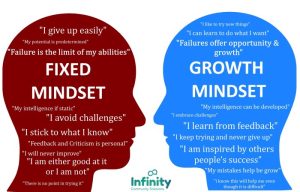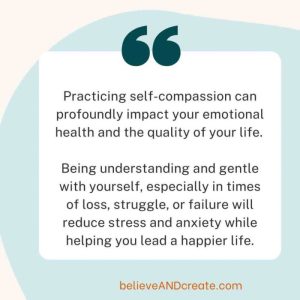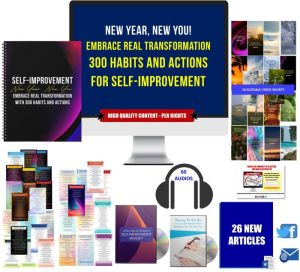Coping with Depression Support Resources
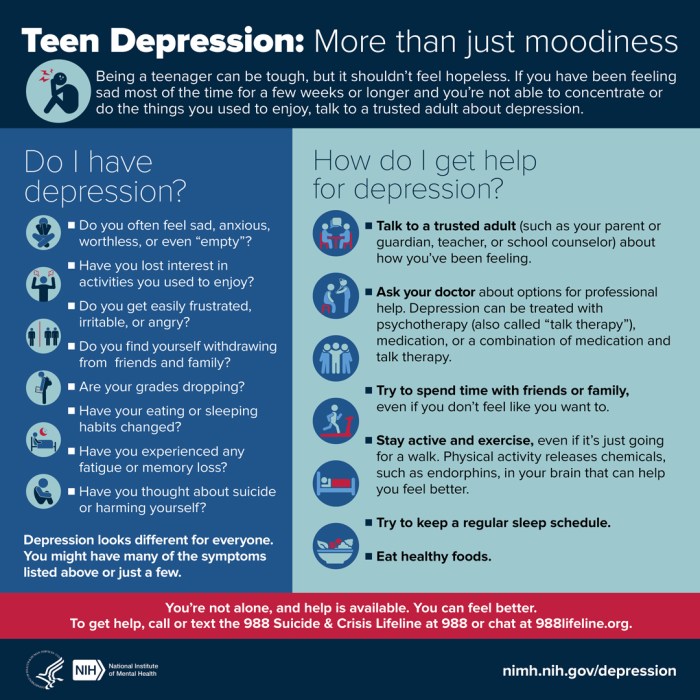
Coping with depression support resources are crucial for navigating this challenging mental health condition. This guide explores various avenues for support, from understanding stress management techniques and mindfulness practices to accessing professional help and building resilience. We’ll delve into the benefits and limitations of different approaches, empowering you to find the resources that best suit your individual needs and journey toward recovery.
The information provided here aims to offer a comprehensive overview of available support systems, covering both practical strategies and access to professional resources. Remember, seeking help is a sign of strength, and many effective tools and supportive communities are available to aid in your recovery.
Stress and Anxiety Management
Stress and anxiety are common experiences, but when they become overwhelming or persistent, they can significantly impact mental well-being. Understanding the triggers and developing effective coping mechanisms is crucial for managing these conditions and improving overall mental health. This section explores common triggers, practical management techniques, and a sample daily schedule designed to promote relaxation and reduce stress.
Common Stress and Anxiety Triggers and Their Impact
Various factors can trigger stress and anxiety. These can include major life events like job loss or relationship difficulties, daily hassles such as traffic jams or financial worries, and even internal factors such as negative self-talk or perfectionism. The impact on mental health can manifest in various ways, including difficulty concentrating, irritability, sleep disturbances, physical symptoms like headaches or stomach aches, and even more serious conditions like depression or anxiety disorders if left unmanaged.
Chronic stress and anxiety can weaken the immune system, increase the risk of cardiovascular disease, and negatively affect overall physical and mental health.
Practical Techniques for Managing Stress and Anxiety
Developing effective coping strategies is essential for managing stress and anxiety. The following five techniques offer practical approaches to alleviate these feelings.
- Deep Breathing Exercises: Deep, slow breaths activate the parasympathetic nervous system, counteracting the “fight or flight” response. A simple technique involves inhaling deeply through the nose, holding for a few seconds, and exhaling slowly through the mouth. Regular practice can significantly reduce anxiety levels.
- Progressive Muscle Relaxation: This technique involves systematically tensing and releasing different muscle groups in the body. Starting with the toes and working upwards, tensing each muscle group for a few seconds and then releasing, allows for the release of physical tension often associated with stress and anxiety.
- Mindfulness Meditation: Mindfulness involves paying attention to the present moment without judgment. Through focused attention on breath, body sensations, or sounds, individuals can cultivate a sense of calm and reduce mental chatter associated with anxiety. Guided meditations or apps can be helpful for beginners.
- Regular Exercise: Physical activity releases endorphins, which have mood-boosting effects. Even moderate exercise, such as a brisk walk or a bike ride, can significantly reduce stress and improve overall well-being. Aim for at least 30 minutes of moderate-intensity exercise most days of the week.
- Cognitive Restructuring: This involves identifying and challenging negative or unhelpful thought patterns. By replacing negative thoughts with more realistic and positive ones, individuals can reduce anxiety and improve their emotional responses to stressful situations. Working with a therapist can be beneficial in learning this technique.
Sample Daily Schedule Incorporating Stress-Reducing Activities
Incorporating stress-reducing activities into a daily schedule can significantly improve mental well-being. The following is a sample schedule, adaptable to individual needs and preferences:
- 7:00 AM: Wake up, gentle stretching or yoga
- 7:30 AM: Mindful breakfast
- 8:00 AM – 5:00 PM: Work/Studies (incorporate short breaks for deep breathing or stretching)
- 5:00 PM: Light exercise (e.g., walk, bike ride)
- 6:00 PM: Dinner and relaxation time (e.g., reading, listening to music)
- 7:00 PM: Mindfulness meditation or progressive muscle relaxation
- 8:00 PM: Prepare for bed
- 9:00 PM: Sleep
Comparison of Relaxation Techniques
Different relaxation techniques offer unique benefits. The following table compares three popular methods:
| Technique | Description | Benefits | Considerations |
|---|---|---|---|
| Deep Breathing | Focusing on slow, deep breaths to calm the nervous system. | Reduces heart rate and blood pressure, promotes relaxation. | May require practice to master the technique. |
| Meditation | Focusing on the present moment through breath, body sensations, or sounds. | Reduces stress, improves focus, enhances self-awareness. | Requires regular practice and a quiet environment. |
| Progressive Muscle Relaxation | Systematically tensing and releasing different muscle groups. | Reduces muscle tension, promotes relaxation and sleep. | May require some time and effort to learn the technique. |
Depression Support Resources
Depression is a significant mental health challenge affecting millions worldwide. Accessing appropriate support is crucial for recovery and improved well-being. This section details various resources available to individuals struggling with depression, encompassing national and international organizations, specific charity services, online support options, and financial assistance programs.
Reputable National and International Organizations Offering Depression Support
Several organizations dedicate their efforts to providing support and information about depression. These organizations often offer a range of services, from helplines and online resources to educational materials and advocacy initiatives. Choosing the right organization may depend on individual needs and geographical location. Some prominent examples include the World Health Organization (WHO), the National Institute of Mental Health (NIMH) in the United States, and the Mental Health Foundation in the United Kingdom.
Many similar organizations exist in other countries, often with specific programs tailored to their national contexts.
Services Offered by Three Prominent Mental Health Charities
Three examples of prominent mental health charities illustrate the diverse support available. The first, the American Foundation for Suicide Prevention (AFSP), offers a helpline, support groups, educational resources, and advocacy for suicide prevention, directly addressing a significant concern for individuals experiencing depression. Contact: 1-800-273-TALK (8255). Secondly, the Mental Health America (MHA) provides a wide array of resources including screening tools, educational materials, support groups, and advocacy work to improve mental health awareness and access to care.
Contact: Information available on their website. Finally, Mind, a UK-based charity, offers information and support on a range of mental health issues, including depression, through helplines, online resources, and local support groups. Contact: Information available on their website.
Benefits and Limitations of Online Support Groups for Depression
Online support groups offer several advantages for individuals experiencing depression. These include accessibility, anonymity, and the opportunity to connect with others who understand their experiences. The ability to participate from the comfort of one’s home can be particularly beneficial for individuals with limited mobility or social anxiety. However, online support groups also have limitations. The lack of face-to-face interaction can limit the depth of connection, and the anonymity can sometimes lead to less accountability and potentially harmful interactions.
Moderation is crucial to ensure a safe and supportive environment. It is also important to remember that online support should not replace professional help.
Financial Assistance for Mental Healthcare
Accessing mental healthcare can be financially challenging for many individuals. Several programs offer financial assistance to make treatment more affordable. Eligibility criteria vary depending on the program and individual circumstances. Some programs may consider income level, insurance coverage, and the type of treatment needed. In the United States, for example, the Affordable Care Act (ACA) expanded access to mental healthcare coverage, while many states also offer specific programs to assist individuals with mental health costs.
It is crucial to research available options within one’s region to determine eligibility and access available assistance.
Mindfulness Practices: Coping With Depression Support Resources
Mindfulness, the practice of paying attention to the present moment without judgment, offers a powerful tool for managing depression symptoms. By cultivating awareness of thoughts, feelings, and sensations, individuals can begin to detach from negative thought patterns and cultivate a greater sense of self-compassion. This section explores several mindfulness techniques, guided meditations, supporting scientific evidence, and a practical guide for incorporating mindfulness into daily life.
Three Mindfulness Techniques and Their Applications in Coping with Depression
Mindfulness techniques offer diverse approaches to managing depressive symptoms. Three particularly effective techniques are mindful breathing, body scan meditation, and mindful movement. These practices help to ground individuals in the present, reducing rumination on past events or anxieties about the future, common characteristics of depression.Mindful breathing involves focusing solely on the sensation of breath entering and leaving the body.
This simple act can anchor the mind when feelings of overwhelm or sadness arise. Body scan meditation extends this awareness to the entire body, noticing sensations without judgment. This can help to identify physical manifestations of stress and anxiety, allowing for a more compassionate response. Mindful movement, such as yoga or tai chi, combines physical activity with mindful awareness, promoting both physical and mental well-being.
These practices can help to alleviate symptoms of depression by reducing stress, improving mood, and promoting a sense of self-awareness.
Guided Meditation Scripts for Beginners
Guided meditations can provide a structured approach to mindfulness practice, particularly beneficial for beginners. The following scripts focus on stress reduction and self-compassion.
Stress Reduction Meditation
Find a comfortable position, either sitting or lying down. Close your eyes gently. Bring your attention to your breath, noticing the sensation of the air entering and leaving your nostrils. As you breathe in, silently say to yourself, “In,” and as you breathe out, say, “Out.” If your mind wanders, gently guide it back to your breath. Continue this for 5-10 minutes. When you are ready, slowly open your eyes.
Self-Compassion Meditation
Find a comfortable position. Close your eyes. Bring to mind a situation that is causing you distress. Acknowledge the difficulty of this situation without judgment. Imagine placing a comforting hand on your heart. Silently repeat to yourself, “May I be kind to myself. May I be patient with myself. May I accept myself as I am.” Continue this for 5-10 minutes. When you are ready, slowly open your eyes.
Scientific Evidence Supporting the Effectiveness of Mindfulness in Improving Mental Well-being
Numerous studies support the efficacy of mindfulness in improving mental well-being. Research consistently demonstrates that mindfulness-based interventions, such as Mindfulness-Based Stress Reduction (MBSR) and Mindfulness-Based Cognitive Therapy (MBCT), can significantly reduce symptoms of depression and anxiety. For instance, a meta-analysis published in the Journal of Consulting and Clinical Psychology found that mindfulness-based interventions were effective in reducing depressive symptoms, with effect sizes comparable to other evidence-based treatments.
These studies suggest that mindfulness practices can help to regulate emotional responses, improve self-awareness, and foster a more compassionate relationship with oneself.
Step-by-Step Guide for Incorporating Mindfulness into a Daily Routine
Incorporating mindfulness into daily life requires a gradual and consistent approach.
- Start small: Begin with just 5-10 minutes of daily practice. Consistency is key, even if it’s only a few minutes each day.
- Find a quiet space: Choose a calm environment where you can focus without distractions.
- Choose a technique: Select a mindfulness technique that resonates with you, such as mindful breathing or a body scan.
- Be patient and kind to yourself: Mindfulness is a skill that takes time and practice. Don’t get discouraged if your mind wanders; gently guide it back to your chosen focus.
- Gradually increase duration: As you become more comfortable, gradually increase the duration of your practice.
- Integrate into daily activities: Practice mindfulness during everyday tasks, such as eating, walking, or showering.
Mental Health Advocacy
Advocating for better mental healthcare access is crucial for creating a society that supports the well-being of all its members. This involves overcoming significant obstacles and employing effective strategies to bring about meaningful change. Success in this area requires understanding the challenges faced, implementing effective advocacy methods, and learning from past achievements.Effective mental health advocacy requires navigating a complex landscape of systemic and societal barriers.
Challenges Faced by Mental Health Advocates
Individuals and organizations advocating for improved mental healthcare access face numerous challenges. Funding limitations often restrict the scope of programs and initiatives. Legislative hurdles can make it difficult to pass laws that improve access to care and services. Furthermore, the pervasive stigma surrounding mental illness creates barriers to open dialogue and prevents individuals from seeking help. A lack of public awareness can hinder support for policy changes and funding initiatives.
Finally, navigating bureaucratic processes and coordinating with multiple stakeholders can be incredibly time-consuming and complex. These obstacles highlight the need for persistent and strategic advocacy efforts.
Strategies for Effective Advocacy
Several strategies can significantly improve the effectiveness of mental health advocacy. Writing letters to elected officials is a powerful way to express concerns and advocate for specific policy changes. These letters should be concise, well-researched, and focused on specific legislative actions. Participating in awareness campaigns, such as Mental Health Awareness Month, can raise public awareness and reduce stigma.
These campaigns can involve organizing events, sharing personal stories, and promoting educational resources. Collaborating with other advocacy groups and organizations amplifies the collective voice and increases the impact of advocacy efforts. This collaborative approach can leverage diverse expertise and resources to achieve common goals. Using social media platforms to share information and engage in discussions can reach a wider audience and foster community support.
Finally, supporting and participating in research initiatives helps build a stronger evidence base for advocating for policy changes.
Examples of Successful Mental Health Advocacy Initiatives
The “You Are Not Alone” campaign, a large-scale public awareness initiative, successfully reduced stigma and encouraged individuals to seek help. The campaign utilized various media platforms to disseminate information and promote help-seeking behavior. Another successful example is the advocacy work of organizations like the National Alliance on Mental Illness (NAMI), which has been instrumental in shaping mental health policy and improving access to care through lobbying efforts and public education.
Their work has led to significant legislative changes and increased funding for mental health services in many regions. These initiatives demonstrate the power of sustained and strategic advocacy.
Reducing Stigma Through Advocacy
Reducing the stigma associated with mental illness is a central goal of mental health advocacy. Stigma prevents individuals from seeking help, leading to delayed treatment and poorer outcomes. Advocacy efforts can challenge negative stereotypes and promote understanding by sharing personal stories, highlighting the successes of individuals living with mental illness, and educating the public about the nature and impact of mental health conditions.
By promoting open and honest conversations, advocates can create a more supportive and inclusive environment for those struggling with mental health challenges. This inclusive approach fosters empathy and understanding within communities.
Therapy and Counseling Options
Seeking professional help is a crucial step in managing depression and anxiety. Therapy and counseling offer structured approaches to address underlying issues and develop coping mechanisms. Different therapeutic approaches cater to diverse needs and preferences, making it essential to understand the options available.
Therapy involves a collaborative relationship between a trained professional and an individual seeking help. The goal is to identify and address problematic thoughts, feelings, and behaviors, ultimately improving mental well-being and quality of life. Several different therapeutic approaches exist, each with its own techniques and focus.
Comparison of Therapeutic Approaches
Cognitive Behavioral Therapy (CBT) and Dialectical Behavior Therapy (DBT) are two prominent examples of effective therapeutic approaches. CBT focuses on identifying and modifying negative thought patterns and behaviors that contribute to emotional distress. It emphasizes practical techniques for managing symptoms and improving coping skills. DBT, often used for individuals with borderline personality disorder or intense emotional dysregulation, builds upon CBT by incorporating mindfulness practices and distress tolerance skills.
While both therapies are evidence-based and aim to improve mental health, their approaches differ in focus and techniques. CBT primarily targets cognitive restructuring and behavioral modification, while DBT also emphasizes emotional regulation and acceptance. For example, a person with social anxiety might use CBT techniques to challenge negative thoughts about social situations and practice exposure therapy, while someone struggling with intense emotional outbursts might benefit from DBT’s emphasis on mindfulness and distress tolerance.
Finding a Qualified Therapist or Counselor
Locating a suitable therapist involves careful consideration and research. Many resources are available to assist in this process. Online directories, referrals from healthcare providers, and recommendations from trusted individuals can all be valuable tools. It’s important to check a therapist’s credentials, ensuring they are licensed and experienced in treating the specific concerns you’re facing. Reading online reviews and testimonials can also provide insights into a therapist’s approach and effectiveness.
Insurance coverage should also be a factor in your decision, as the cost of therapy can vary significantly.
Questions to Ask Potential Therapists
Before committing to therapy, it’s beneficial to have an initial consultation with a potential therapist. This allows you to assess their suitability and determine if you feel comfortable working with them. Asking specific questions helps you make an informed decision. For example, inquire about their therapeutic approach, experience treating similar conditions, and their fees and insurance policies.
Understanding their approach to confidentiality and the expected duration of therapy is also crucial. Finally, ask about their availability and whether they offer telehealth options, if that is a preference.
Benefits and Limitations of Therapy Modalities
Various therapy modalities offer unique benefits and limitations. For instance, CBT’s structured approach and focus on practical skills can lead to rapid symptom reduction, but it may not be as effective for individuals who struggle with intense emotional dysregulation. DBT’s emphasis on emotional regulation and acceptance can be highly beneficial for individuals with complex emotional challenges, but it requires a significant commitment to practice the skills learned in therapy.
Psychodynamic therapy, which explores unconscious patterns and past experiences, can provide deep insights but may be a longer-term process. Ultimately, the most effective therapy modality depends on individual needs and preferences, and a collaborative relationship with a therapist is key to achieving positive outcomes.
Building Resilience
Resilience is the ability to bounce back from adversity, stress, and trauma. It’s not about avoiding hardship, but about developing the inner strength and coping strategies to navigate challenges effectively and emerge stronger. Building resilience is a proactive process, involving recognizing your strengths, developing healthy coping mechanisms, and fostering supportive relationships.Factors Contributing to Resilience and Their DevelopmentResilience isn’t an innate trait; it’s a skill that can be learned and strengthened over time.
Several factors contribute to a person’s resilience. These include possessing a positive outlook, strong problem-solving skills, a sense of self-efficacy (belief in one’s ability to succeed), and the capacity for self-regulation. Developing these factors involves conscious effort and practice. For example, practicing gratitude can cultivate a more positive outlook, while engaging in activities that challenge problem-solving skills, like puzzles or strategic games, can enhance cognitive flexibility.
Similarly, setting achievable goals and celebrating successes builds self-efficacy, and mindfulness techniques can improve self-regulation.
Strategies for Building Coping Mechanisms
Effective coping mechanisms are crucial for navigating difficult situations. These strategies help individuals manage stress, regulate emotions, and maintain a sense of control. Some examples include:
- Mindfulness and Meditation: These practices help to calm the mind and body, reducing stress and anxiety responses to challenging situations.
- Physical Exercise: Regular physical activity releases endorphins, which have mood-boosting effects and can improve overall well-being.
- Healthy Diet and Sleep: Nourishing the body with a balanced diet and ensuring adequate sleep are fundamental for maintaining physical and mental health, enhancing resilience to stress.
- Social Connection: Spending time with loved ones and engaging in social activities provides emotional support and a sense of belonging.
- Cognitive Restructuring: Identifying and challenging negative thought patterns can help to shift perspectives and reduce feelings of helplessness.
The Role of Social Support in Enhancing Resilience, Coping with depression support resources
Strong social connections are a powerful buffer against stress and adversity. Social support provides emotional comfort, practical assistance, and a sense of belonging. Individuals with strong social networks tend to cope better with challenges and exhibit greater resilience. This support can come from family, friends, colleagues, support groups, or even online communities. Actively cultivating and maintaining these relationships is essential for building resilience.
For instance, regularly connecting with friends and family, joining community groups, or seeking professional support can significantly enhance resilience.
A Plan to Increase Personal Resilience
Building resilience is a journey, not a destination. A structured approach can help individuals develop and strengthen their resilience over time. This plan Artikels key steps:
- Self-Assessment: Identify personal strengths, weaknesses, and stressors.
- Goal Setting: Set realistic and achievable goals for improving resilience.
- Skill Development: Learn and practice coping mechanisms such as mindfulness, exercise, and stress management techniques.
- Social Connection: Cultivate and maintain strong social relationships.
- Self-Care: Prioritize self-care activities that promote physical and mental well-being.
- Regular Review: Regularly assess progress and adjust the plan as needed.
Sleep and Mental Health
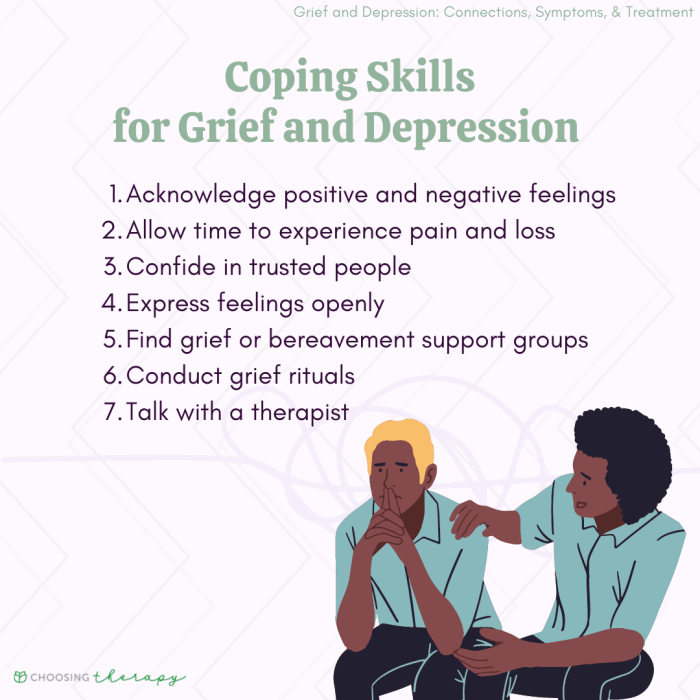
Sleep and mental health are intricately linked, forming a complex bidirectional relationship. Sufficient, high-quality sleep is crucial for maintaining good mental well-being, while poor sleep significantly impacts mood, cognitive function, and the ability to cope with stress. Conversely, mental health conditions often disrupt sleep patterns, creating a vicious cycle that can exacerbate symptoms. Understanding this relationship is key to effective mental health management.Sleep deprivation’s impact on mood and cognitive function is substantial.
Even mild sleep restriction can lead to irritability, difficulty concentrating, impaired judgment, and increased emotional reactivity. Chronic sleep deprivation is strongly associated with an increased risk of developing or worsening symptoms of depression, anxiety, and other mental health disorders. For instance, studies have shown a correlation between insufficient sleep and a higher likelihood of experiencing depressive episodes in individuals with a predisposition to depression.
The cognitive impairment resulting from sleep loss affects daily functioning, hindering productivity and interpersonal relationships.
Sleep Hygiene Practices for Improved Sleep
Establishing good sleep hygiene involves creating a consistent and supportive sleep environment and adopting healthy sleep habits. These practices help regulate the body’s natural sleep-wake cycle, promoting better sleep quality and duration. Consistency is paramount; maintaining a regular sleep schedule, even on weekends, helps synchronize the body’s internal clock. Creating a relaxing bedtime routine, such as taking a warm bath or reading a book, signals to the body that it’s time to wind down.
The bedroom should be dark, quiet, and cool, optimized for sleep. Limiting screen time before bed is also crucial, as the blue light emitted from electronic devices interferes with melatonin production, a hormone essential for sleep regulation. Avoiding caffeine and alcohol close to bedtime is equally important, as these substances can disrupt sleep patterns. Regular physical activity, ideally earlier in the day, can improve sleep quality, but intense workouts should be avoided close to bedtime.
Relaxation Techniques for Better Sleep
Incorporating relaxation techniques before bedtime can significantly improve sleep quality by reducing stress and anxiety, common contributors to sleep disturbances. Progressive muscle relaxation, a technique involving systematically tensing and releasing different muscle groups, can help relieve physical tension and promote relaxation. Deep breathing exercises, focusing on slow, deep breaths, can calm the nervous system and reduce heart rate.
Guided imagery, which involves visualizing peaceful scenes, can create a sense of calm and tranquility. Mindfulness meditation, focusing on the present moment without judgment, can help quiet the mind and reduce racing thoughts that often interfere with sleep. These techniques can be practiced independently or combined for a more comprehensive relaxation routine. The key is to find techniques that are enjoyable and effective for the individual.
Consistent practice is essential to experience the full benefits.
Workplace Mental Health

Maintaining good mental health is crucial for overall well-being, and the workplace plays a significant role in shaping an individual’s mental state. A supportive and understanding work environment can foster positive mental health, while a stressful or unsupportive one can significantly contribute to mental health challenges. This section explores the intersection of work and mental well-being, offering strategies for creating healthier workplaces and supporting employees facing mental health difficulties.
Common Workplace Stressors
High levels of workplace stress are frequently linked to negative impacts on mental well-being. These stressors can manifest in various forms, impacting employees’ physical and emotional health. Understanding these common stressors is the first step towards mitigating their effects.
- High workload and long hours: Excessive demands on time and energy can lead to burnout, anxiety, and decreased job satisfaction.
- Lack of control and autonomy: Feeling powerless to influence decisions affecting one’s work can lead to frustration and stress.
- Poor work-life balance: The inability to separate work from personal life can blur boundaries, leading to exhaustion and increased stress levels.
- Workplace conflict and bullying: Negative interactions with colleagues or supervisors can create a hostile environment, impacting mental health significantly.
- Lack of recognition and appreciation: Feeling undervalued or unappreciated can decrease motivation and contribute to feelings of inadequacy.
- Job insecurity: Uncertainty about one’s employment status can lead to significant anxiety and stress.
- Lack of support from supervisors or colleagues: A lack of a supportive network at work can exacerbate feelings of isolation and loneliness.
Promoting a Mentally Healthy Workplace
Creating a mentally healthy workplace requires a proactive and multi-faceted approach. It involves implementing strategies that address the common stressors mentioned above and cultivate a supportive and inclusive environment.
This includes fostering open communication, encouraging work-life balance through flexible work arrangements, providing opportunities for professional development, and implementing robust anti-bullying and harassment policies. Regular feedback sessions, team-building activities, and access to employee assistance programs (EAPs) can further contribute to a positive work environment.
Employer Support for Employee Mental Health
Employer support is paramount in addressing employee mental health challenges. A supportive employer acknowledges the importance of mental well-being and takes proactive steps to create a healthy work environment. This goes beyond simply offering EAPs; it involves creating a culture where employees feel comfortable discussing mental health concerns without fear of stigma or retribution. Training managers to recognize and respond appropriately to employees struggling with mental health is also crucial.
Examples of effective employer support include providing mental health training for managers, offering flexible work arrangements, and actively promoting a culture of open communication and support.
Resources for Employees
Numerous resources are available to employees struggling with mental health challenges in the workplace. These resources can provide essential support, guidance, and access to professional help.
These resources can include employee assistance programs (EAPs), which often offer confidential counseling and support services. Mental health apps and online resources provide readily accessible information and tools for self-management. Furthermore, many workplaces offer access to mental health professionals through their health insurance plans. Employees should familiarize themselves with the resources available to them through their employer and seek help when needed.
Ultimately, overcoming depression requires a multifaceted approach. This guide has highlighted the diverse range of coping mechanisms, support resources, and professional avenues available to individuals facing this challenge. By combining practical strategies with professional guidance and fostering self-compassion, you can build resilience and work towards a healthier, more fulfilling life. Remember that recovery is a journey, not a destination, and seeking support is a vital step in that process.
FAQ Explained
What if I can’t afford therapy?
Many organizations offer sliding-scale fees or financial assistance for mental healthcare. Check with local community centers and mental health charities for options in your area.
How do I find a therapist who’s a good fit for me?
Start by researching therapists in your area and reading online reviews. Many therapists offer free 15-minute consultations. Use this time to discuss your needs and see if you feel comfortable with their approach.
Is online therapy as effective as in-person therapy?
The effectiveness of online therapy is comparable to in-person therapy for many individuals. The best approach depends on personal preference and the specific needs of the individual.
What should I do if I’m having a mental health crisis?
Contact a crisis hotline immediately. You can also reach out to a trusted friend, family member, or mental health professional.



